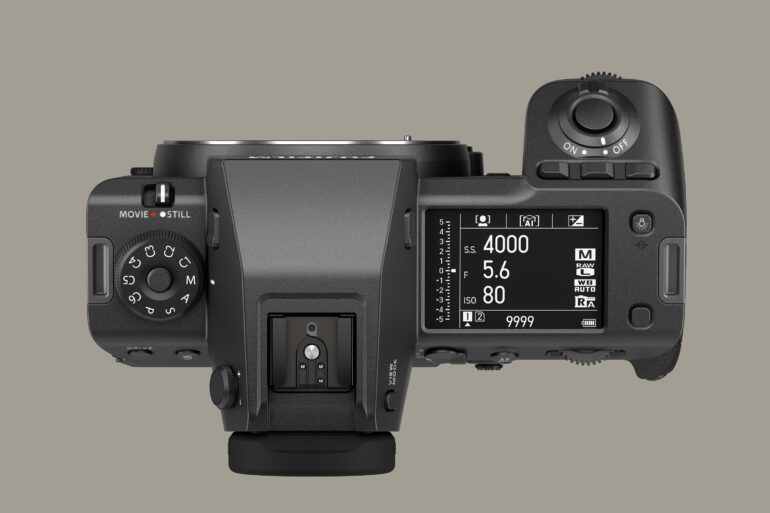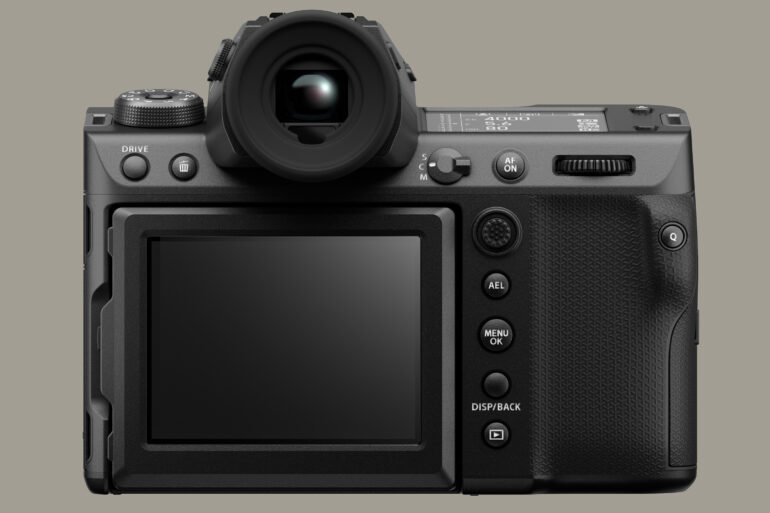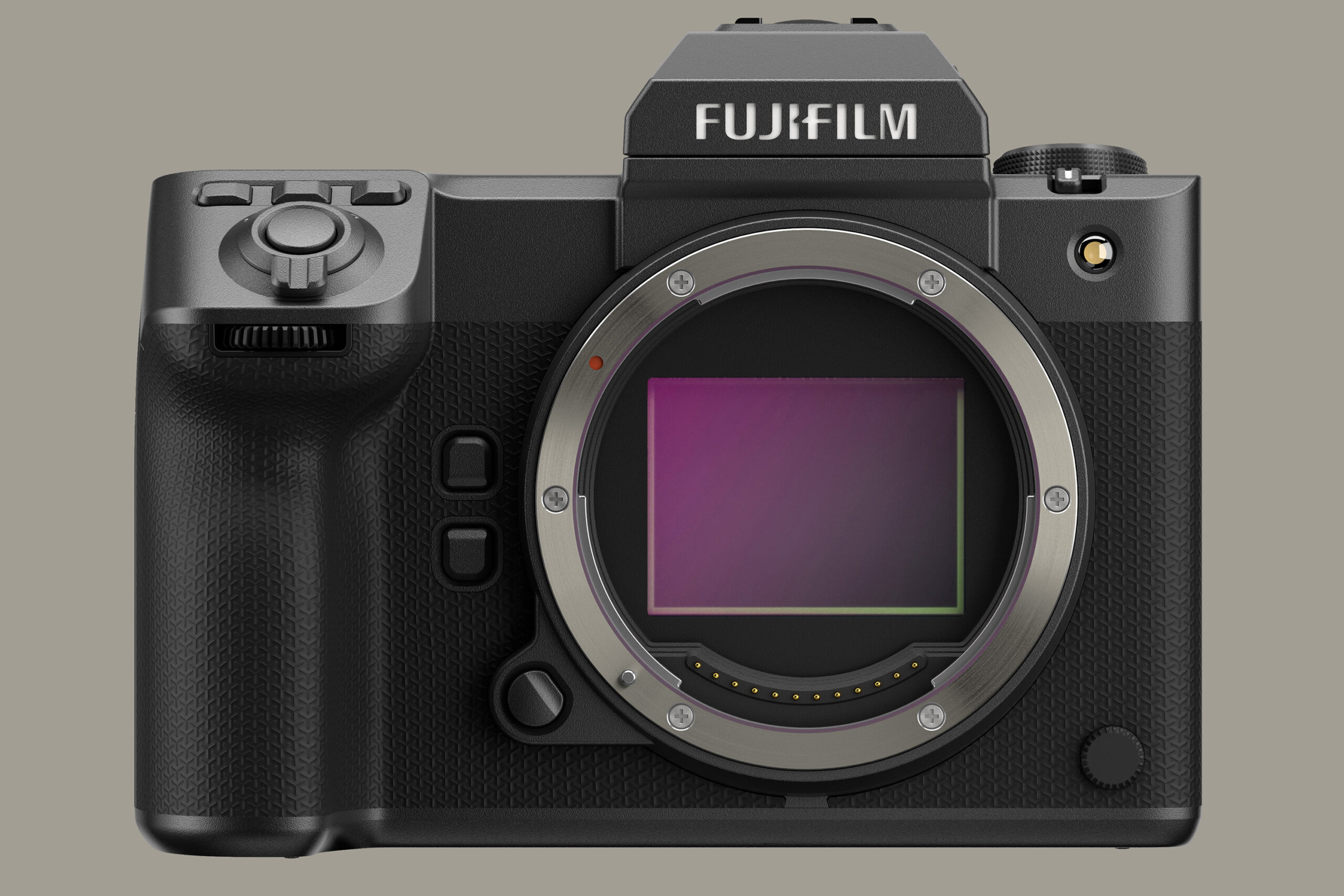The latest in Fujifilm’s triple-digit megapixel count medium format cameras has arrived — the Fujifilm GFX100 II. But, despite the II in the name, Fujifilm overhauled almost everything about the original, from the sensor, processor, and autofocus system down to an entirely new body. The Fujifilm GFX100 II isn’t a minor generational update. For starters, Fujifilm insists that the II is pronounced “the second” like a regal generational name rather than a junior and definitely not two or mark two. Despite the upgrades, the second generation also comes with a lower price point.
What’s new on the Fujifilm GFX100 II vs GFX100

- An updated 102-megapixel sensor offers the same resolution as the original, but the photo sites at the edges have been optimized for light efficiency, Fujifilm says, which increases image quality and autofocus performance at the edges.
- An updated processor that doubles the readout speeds from the previous model, with 8 fps burst (vs. 5 fps) speeds and native ISO 80 (vs. native ISO 100).
- An updated autofocus system with the same algorithms as the Fujifilm XH2 series, including AI-based subject detection for animals, birds, vehicles and even insects and drones.
- A new film simulation called Reala Ace.
- A five-axis body stabilization system rated for 8 stops (vs. 5.5).
- A faster multi-shot mode that uses fewer images to stitch together a 400 megapixel file.
- A newly designed smaller body that Fujifilm is calling an ergonomic flagship.
- A detachable viewfinder with an optional tilt accessory.
- Camera to cloud frame.io compatibility built-in.
- Upgraded video specs including 4K 60p and 8K 30p with a 1.44x crop of the sensor.
The Fujifilm GFX100 is an impressive beast of a medium format camera, but the stunning images are accompanied by issues with a slow autofocus system and poor ergonomics. The second iteration of the camera, however, sees an overhaul in both autofocus and ergonomics, as well as an upgraded sensor and processor. The new 102 megapixel medium format sensor has the same resolution as the original, but Fujifilm says the edges have been upgraded for more light gathering and better autofocus performance. A new processor brings the camera from 5 fps to 8 fps, while also allowing the base ISO of 80.
The images from the original were lovely enough that few would have complained about the sensor remaining the same, and for a medium format camera, speed wasn’t terrible either. The new body, however, is a very welcome change as the original had a shallow grip that made the heavier body and lenses difficult to hold for long periods of time. The Fujifilm GFX100 II no longer has the built-in battery grip, instead offering a much smaller, lighter 33.4 ounce body and the option to purchase a battery grip separately. Fujifilm calls the new body an ergonomic flagship and while it’s difficult to judge the feel of a camera based on pictures and tech specs, I’m hopeful that the GFX100 II has a feel similar to the XH2 series. While I prefer the classically-inspired dials of the XT series, I think a beefier DSLR-like grip is going to go a long way for a larger medium format camera and the heavier glass it requires.

A fan for longer video recording is an optional accessory, so without a vent the Fujifilm GFX100 II has a flip-out LCD screen that’s similar to the design on the X-T5. The body keeps the sub-LCD panel at the top. The viewfinder is the detachable type, with a 9.44 million dot resolution, 1x magnification, and the ability to shoot blackout free at 5 fps. A tilt adapter can be added, but it’s another optional accessory sold separately. Along that same theme, Fujifilm is also offering a separate battery grip, though unlike the XH2 series, the GFX100 II is compatible with camera-to-cloud on frame.io without adding the grip. With the optional grip, cooling fan, and viewfinder tilt adapters, the Fujifilm GFX100 II feels almost modular.
Fujifilm says the GFX100 II also sees an upgraded autofocus system, using the same algorithms from the XH2 and XH2s. The autofocus tracking begins before shooting and both face detection and tracking is rated to work in dark scenes as low as -6 EV. AI-based subject detection is included, including animals and vehicles. While the series needed an autofocus improvement, I’m hesitant of just how much of an improvement the upgrade is without hands-on experience with the camera itself. There are times that I feel like my older Fujifilm X-T4 focused faster than the updated X-T5 and XH2. Hopefully, the upgrade to both the sensor and the processor will boost that autofocus speed enough to deliver a reasonably high hit rate.
Even the stabilization system sees an upgrade over the original, with an eight stop optical system over the original’s 5.5-stop rating.
But, perhaps what’s most exciting about the Fujifilm GFX100 II is the price — it’s $7,499 for the body only, where the first generation sold for $10K. That’s a pretty steep drop from the original. Of course, it no longer has the built-in grip, but even the $500 grip price and cost of two extra batteries doesn’t make up for the difference.
For photographers that can still only dream about a camera that costs $7.5K, the launch of the Fujifilm GFX100 II has one more thing to get excited about — a new color profile. The GFX100 II is the first Fujifilm to feature Reala Ace, which is based on the discontinued Superia Reala 100. The film had an extra dye layer and was lauded for faithful color preproductions in mixed lighting, as well as being noted for its skin tones. The new Reala Ace color profile should follow that same inspiration and is designed for neutral, accurate colors. As many — if not most — Fujifilm fans choose the brand for its color profiles, the addition of another color profile is promising. While new film simulations tend to stick to pricey flagships at first, I would expect future APS-C bodies to launch with the additional color profile as well.
The camera was announced during the Fujifilm X Summit along with a new GF 55mm f1.7 R WR, GF 30mm f5.6 TS, and GF 110mm f5.6 T/S Macro. Fujifilm also updated the GFX lens roadmap to include a future 500mm f5.6 lens.
Fujifilm hasn’t yet shared an exact ship date for the new camera, but says it will be available in “early fall 2023.”


